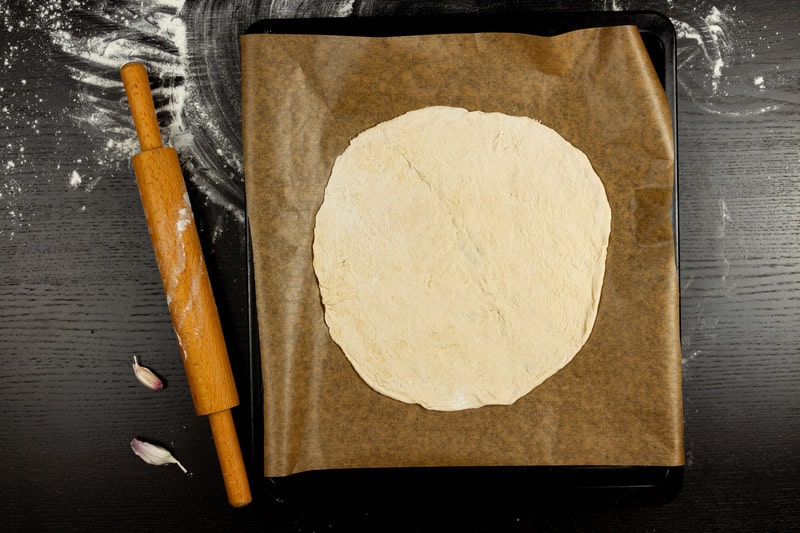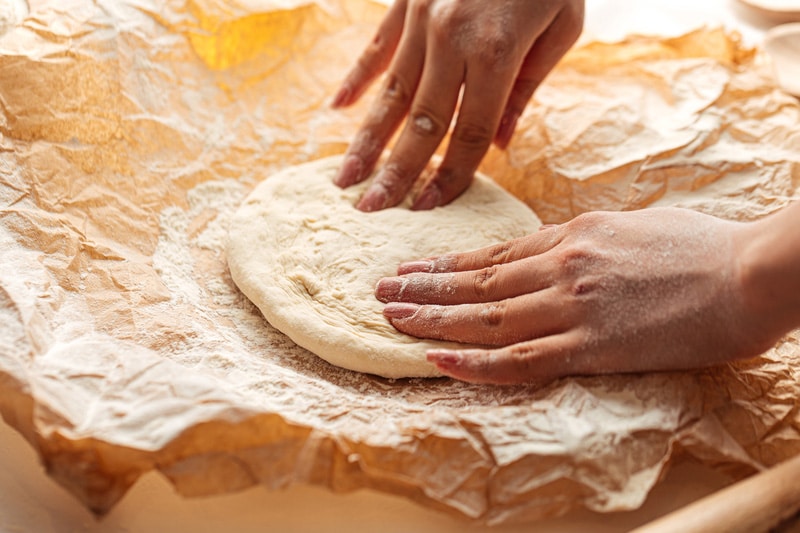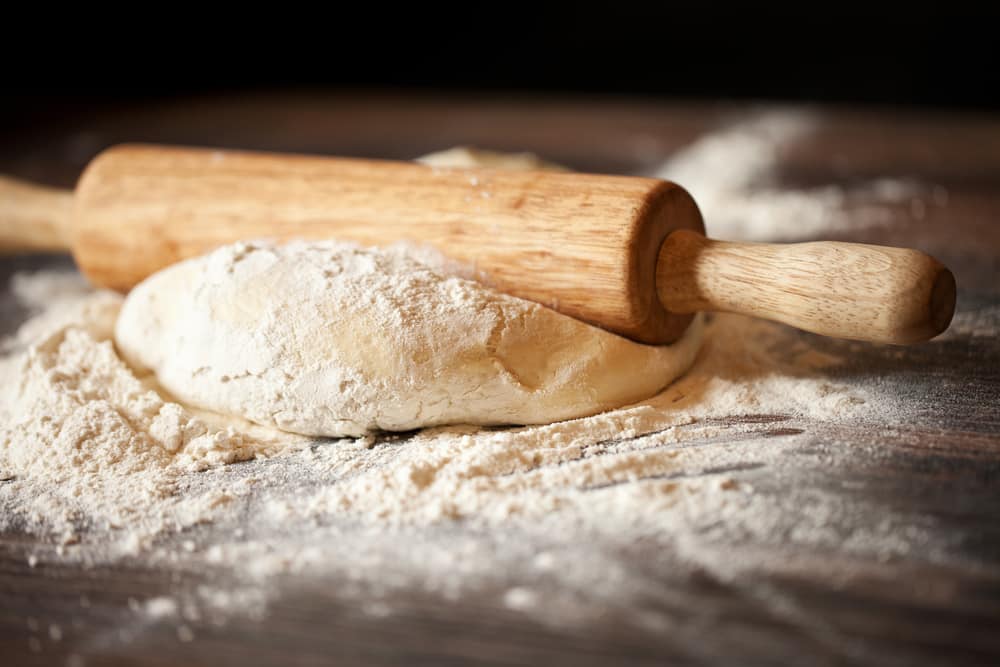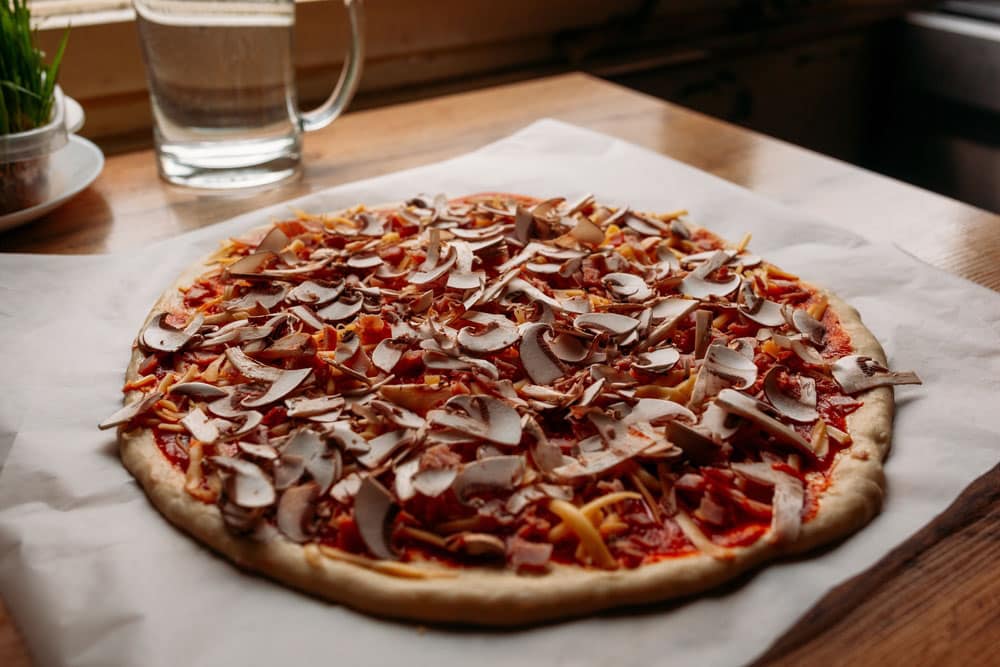
Baking pizza might be one of your hobbies and it is certainly a fun Friday night dinner, but it can get messy, particularly when the pizza dough sticks to the parchment paper or the work surface.
So, if you are going to bake pizza and are concerned about the sticking, we are sharing here why the dough sometimes sticks and how it can be prevented.
Pizza Dough Sticks to Parchment Paper
Using Parchment Paper To Bake Pizza
It is fine to use parchment paper for baking pizza but it is not traditional. However, it is convenient as the parchment paper is perfect for transferring the uncooked pizza from the work surface to your oven tray, and it usually helps to cook pizza without any sticking or mess.
However, the pizza might not turn out as crispy as if you cook the pizza directly on a hot metal sheet or pizza stone. Moreover, with the intense heat necessary to cook crispy pizzas, some brands of baking parchment may burn and fall apart, resulting in sticking.
Today, we are going to share with you why your pizza dough might be sticking to the parchment paper and what you can do to prevent it.
Lack of preheating
To ensure crispy pizza bases and to prevent any sticking, the oven must be properly preheated. We recommend heating it to its highest setting – between 250 and 260 degrees Celcius (450 to 500 degrees Fahrenheit) before putting the pizzas in.
In addition, if you want to cook pizza with a pizza stone or baking sheet, it needs to be preheated as well. In the case of a pizza stone, make sure that it’s preheated at the highest temperature settings for forty minutes.
Wrong thickness and type of paper
When the pizza stone or tray has been properly preheated, roll out or stretch the pizza on the worktop. Then, cut a piece of parchment paper the size of the pizza stone or baking sheet.
Make sure to use paper that is thick enough to hold the weight of the pizza. Alternatively, precut the parchment to fit then roll the dough directly on it before transferring it across. Also, ensure that you are using paper specially designed for baking.
Brown paper or greaseproof paper will most certainly stick and burn. We recommend silicone-coated baking paper which can be reused, is non-stick, and can withstand the high temperatures necessary for cooking pizza.
Not removing the paper
Ideally, the parchment paper should not remain under the pizza for the entire cooking time. As soon as the dough base has set and begun cooking, the pizza should be slid off and allowed to finish cooking directly on the stone.
This will give the base maximum crispness. If it sticks, this probably means that the base is still doughy. Give it another minute or so before trying again.
Not using flour
While technically one shouldn’t have to use flour on non-stick baking parchment, a sprinkling of flour is traditional and will help the pizza base slide off more easily. It creates a barrier between the paper and the pizza.
Alternatively, you can sprinkle the paper with semolina, cornmeal, or fine polenta.
Incorrect dough texture
The dough for the pizza base should be well-kneaded and elastic but not too sticky. Adding too much liquid will result in a gluey consistency that will stick to the bowl, your hands, the work surface, and the parchment.
If yours feels like this, add more flour, kneading it in well until you achieve the right texture.
Too many toppings
We know it’s tempting to use as many of those amazing toppings as possible. Go easy, though, and try to keep it simple. Juices from too many toppings will ooze off the edges of the pizza and seep underneath, resulting in a soggy base that sticks easily.
To Conclude
We hope this article has helped you to understand why pizza dough sometimes sticks to the parchment. Use our handy tips to prevent this from happening. Buon appetito!


